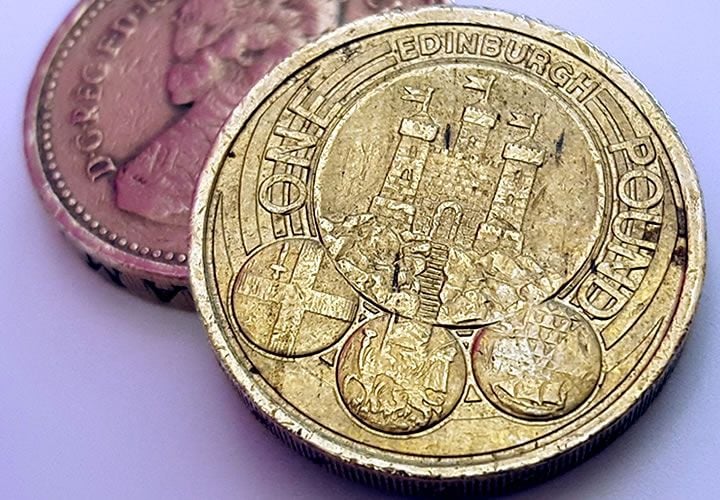British Pound in Strong Recovery on Retail Sales Data, Euro and US Dollar Driven by Fed Rate Expectations
- Written by: Gary Howes
-

Pound sterling has moved higher ahead of the long weekend on the back of a combination of good domestic data and general fatigue in the GBP sell-off.
- US dollar index higher as markets realise the next U.S. interest rate hike could come at the next Federal Reserve Meeting
- Pound enters recovery mode after period of agressive selling
- Euro falls prey to central bank policy divergence
Nothing can last forever, particularly in currency markets. Hence, the trend of selling the pound appears to have let-up ahead of the Easter break.
Part of the reason for the reprieve will be the release of better-than-expected UK retail sales and a likely round of profit-taking on a now oversold currency.
Markets will likely not want to be exposed to being so short on Sterling ahead of the long break as the EU referendum story could change notably over coming days.
Retail sales appear to have been the trigger to the recovery.
Year-on-year estimates of the quantity bought in the retail industry showed growth for the 34th consecutive month in February 2016, increasing by 3.8% compared with February 2015.
A month-on-month comparison showed sales were 0.4% down on the previous month, however this was much better than the -0.7% forecast by analysts.
"We doubt that February’s dip in retail sales is the beginning of a more pronounced slowdown in the pace of the consumer recovery. What’s more, while there are some headwinds to spending growth, the outlook remains fairly bright," says Paul Hollingsworth at Capital Economics
The retail sector is incredibly important to the UK economy which is a services-orientated economy that relies heavily on consumer spending.
- The pound to euro exchange rate is today trading 0.20% higher on a day-on-day comparison having reached 1.2660. Our algorithms are suggesting banks are offering international transfers from around 1.225-1.30, while independent providers are likely quoting you at 1.24-1.2420.
- The pound to dollar exchange rate is today 0.10 higher than where it closed last night at 1.4130, the proverbial line-in-the-sand set by leading FX forecasters.
- The euro to dollar exchange rate is today around where it has been for the last couple of days at 1.1166.
Markets Finally Able to Hedge Brexit
Despite the relief seen ahead of the Easter break, the ‘Brexit premium’ is still alive and well and continues to dominate all things Sterling.
The 'Brexit premium' refers to the difference between where the pound should be based on economics and where it actually is, thanks to the selling induced by EU referendum uncertainties.
“The pound remains under pressure against both the dollar and the euro as Brexit concerns continue to weigh. GBP/EUR broke below the 1.26 mark this morning to a new low since December 2014,” says a client briefing from brokerage CaxtonFX.
The GBP has traded heavily in recent sessions, as the mild “risk-off” tone and heightened political uncertainty have weighed on GBPUSD in particular.
“Yesterday provided an indication of the risk premium being “priced-in” for the EU referendum, as options with a 3 month tenor included the decision date – 23rd June – for the first time,” notes Robin Wilkins at Lloyds Bank.
Lloyds note a surge in 3-month GBP volatility, and the 3-month GBPUSD risk reversal showed its strongest bias towards puts (protection against decline in GBPUSD) since the 2008-09 Financial Crisis, surpassing both the Scottish Referendum and UK General Election in terms of extremity.
Euro to Dollar Heads Lower on Fed Interest Rate Expectations
The dollar strengthened as US Fed Member Bullard indicated yesterday that there may be a case for raising interest rates as early as April, given the possibility of overshooting inflation and unemployment targets.
This added to recent hawkish comments from Fed Members Williams, Lockhart, and Evans.
“Fed officials have been keeping up the hawkish rhetoric. Some market participants are even wondering if this is a coordinated attempt to get the market to price the two hikes that the Fed is predicting,” says John Cairns at RMB.
Indeed, speculation that the next interest rate rise could come at the next Fed meeting has grown. However, a later date would be preferred, but the bottom line is markets have been too willing to sell the dollar on the assumption there will only be one hike in 2016.
"Don’t buy the Fed’s newfound dovish epiphany. Our base case continues to be two Fed hikes in the second half of this year and Fed tightening should still be the market’s base case," says Rich Kelly at TD Securities.
Whatever the case, the tough talk has kept the slow and steady dollar rally intact, EUR/USD is at 1.1170 from a post-Fed peak of 1.1340 last week.
Lloyds’ Wilkins is however forecasting the next major move in EUR to USD as being lower:
“EURUSD remains under pressure as the market continues to re-price the risk of a US rate hike. Having broken below support at 1.1180, should current conditions prevail, the pair is likely to gravitate towards 1.1060/40.”
Look for traffic to slow up in the 1.1060 and 1.1040 congestion areas, these are the infamous 50d and 200d moving averages which reliably stall moves in currencies.





